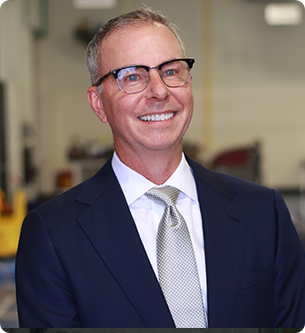What's the ROI For temperature & Viscosity Control Equipment?
What's the Payback Period on Your Equipment?
Somebody asked me the other day, “What’s the payback period on your equipment?”
The reality is it varies. Not only the payback period, (which averages to about nine months), but the way our customers calculate it. It’s typically not just one thing.
Below is a quick summary of common ways companies have been able to justify buying one of our solutions.
Line Speed
The fastest returns we have seen have been a result of increasing line speed. Using temperature instead of solvent to manage your coating viscosity means less solvent to flash off in the curing oven. The less time needed, the faster you can move the material through. This works when the oven is the bottleneck. And when it is, you’re looking at a fast return on investment.
Material Savings
Many of our customers dispense expensive coatings. Even a small reduction in usage can provide large savings. Saving as little as 2 percent of your coating material can generate a short payback period. Whether it’s managing your process to allow you to get closer to the minimum specification, controlling overspray, or simply managing your dispense amounts, material savings is generally a quick return.
Solvent Savings
All materials have a temperature-viscosity curve. As materials warm up, they become less viscous, (think thinner), and as they cool down, they become more viscous, (thicker). For companies looking to reduce their solvent usage, managing the material temperature can be quick and easy. This is not only a tremendous cost saving measure, (we have reduced solvent usage by over 80 percent is some cases), it has also been instrumental in VOC reduction. One of our coil coating customers reduced naphthalene usage by 80 percent and turned that into an EPA National Partnership Environmental Award.
Labor Savings
Many companies we talk to still say it is hard to find and keep good people. Implemented correctly, our temperature and viscosity control systems can help take some of the pressure off.
We had a potential customer that was applying a protective coating to gas tanks. They had implemented a fully automated process, but two things bothered them. First, they needed two separate robot programs for dispensing. Due to changes in plant temperature, their robots had a winter program and a summer program. Additionally, they had anywhere from four to six people at the end of the line performing touch ups on the tanks. Using one of our demonstration units, they were able stabilize their robot performance and reduce the touch up crew to one person, (there were a few issues we couldn’t fix with temperature). The remaining people were available to fill other open jobs within the plant.
Defect Reduction
There are a variety of common dispensing defects that can be reduced and sometimes eliminated using temperature and viscosity control.
For example, in paint and coating applications, having the ability to tightly manage solvent content, (either through automated dosing or by managing with temperature), allows you to reduce a variety of solvent related defects including solvent pop, orange peel, blisters, and color match.
When dispensing thicker materials, like sealants and adhesives, temperature control can allow you to manage bead width, height, and general inconsistencies in bead quality.
Combination
Since everything is connected, most of what we see is companies using a combination of these to prepare a justification. When you’re improving quality, you’re effectively improving throughput, reducing material usage, and reducing your reliance on labor all at the same time. Whatever you may be trying to improve, a simple system that controls material viscosity can help you manage process variability, and you know, variation is the enemy of a healthy manufacturing process.


